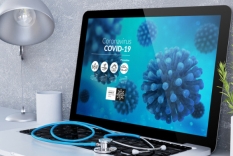CMS guidance for telehealth is changing rapidly. In an effort to continue providing coding and billing assistance to Panacea’s clients and the provider community during this public health emergency (PHE), we are updating the Telehealth coding and billing guidance for providers (physician, nurse practitioner, physician assistant) and have created a listing of eligible codes not only permitted for use by Medicare and Medicaid but at least two major payers (UnitedHealthcare and Blue Cross and Blue Shield). To view the listing of eligible codes, see https://insights.panaceainc.com/coronavirus-outbreak-provider-telehealth-coding-and-billing/
IMPORTANT NOTE: The following guidance was issued by CMS; therefore, it is important for providers to research commercial payer guidance as it may differ from CMS guidance.
On March 31, 2020, CMS issued the following UPDATE to billing for telehealth:
Billing for Professional Non-traditional Telehealth Services During the Public Health Emergency
Building on prior action to expand reimbursement for telehealth services to Medicare beneficiaries, CMS will now allow for more than 80 additional services to be furnished via telehealth. During the PHE, individuals can use interactive apps with audio and video capabilities to visit with their clinician for an even broader range of services. Providers also can evaluate beneficiaries who have audio phones only.
When billing professional claims for non-traditional telehealth services with dates of services on or after March 1, 2020, and for the duration of the Public Health Emergency (PHE), bill with the Place of Service (POS) equal to what it would have been in the absence of a PHE, along with a modifier 95, indicating that the service rendered was actually performed via telehealth.
In addition to clinic visits, CMS is now allowing non-traditional telehealth visits to include emergency department visits, initial nursing facility, and discharge visits, home visits, and therapy services, which must be provided by a clinician that is allowed to provide telehealth. New as well as established patients now may stay at home and have a telehealth visit with their provider. CMS is allowing telehealth to fulfill many face-to-face visit requirements for clinicians to see their patients in inpatient rehabilitation facilities, hospice, and home health.
For example, if a patient would have been seen at the clinic, use POS 11. If the patient would have been seen at a nursing home, use POS 32, and so on. Use the appropriate CPT codes based on the POS with modifier 95.
CMS also released an Interim Final Rule on March 26, 2020, allowing providers to use Medical Decision Making (MDM) or Time as the defining factor in selecting the appropriate level of services for office/outpatient E&M (ONLY) telehealth encounters, as these guidelines will still go into effect on January 1, 2021. If time is used, the provider can include the total time associated with the services on the day of the encounter. See the link below for the complete Interim Final Rule.
As a reminder, CMS is not requiring the “CR” modifier on telehealth services (commercial insurance may require CR modifier for audio-only telehealth services). However, consistent with current rules for traditional telehealth services, there are two scenarios where modifiers are required on Medicare telehealth professional claims:
- Furnished as part of a federal telemedicine demonstration project in Alaska and Hawaii using asynchronous (store and forward) technology, use GQ modifier
- Furnished for diagnosis and treatment of an acute stroke, use G0 modifier
Traditional Medicare telehealth services professional claims should reflect the designated POS code 02-Telehealth, to indicate the billed service was furnished as a professional telehealth service from a distant site. There is no change to the facility/non-facility payment differential applied based on POS. Claims submitted with POS code 02 will continue to pay at the facility rate.
There are no billing changes for institutional claims; critical access hospital method II claims should continue to bill with modifier GT.
CMS MLN Connects Special Edition, Tuesday, March 31, 2020 https://www.cms.gov/outreach-and-educationoutreachffsprovpartprogprovider-partnership-email-archive/2020-03-31-mlnc-se
CMS Interim Final Rule, CMS-1744-IFC https://www.cms.gov/files/document/covid-final-ifc.pdf



